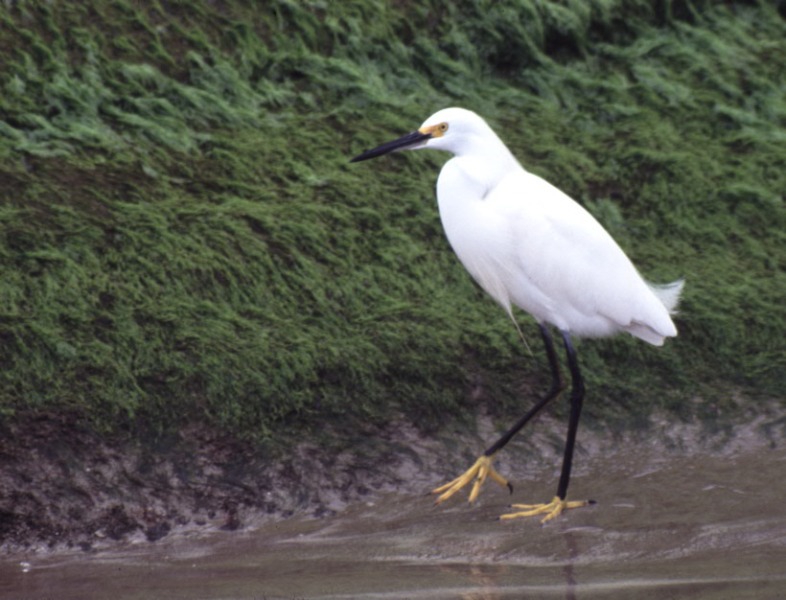Vivid white against dark vegetation
By Dave Hanks
One animal, that was guaranteed to get student attention on high school biology field trips, was the SNOWY EGRET. The vivid whiteness, in the morning light, was a real attention getter. This 24” bird has a satiny white body, black legs with yellow feet, a yellow patch in front of the eye, and a long, narrow, dark bill. Its call is a loud, nasal squawk. A related species is the Great Egret, which is larger, has dark feet, and a yellow bill.
Their habitat is along the shallows of rivers, shallow ponds, or the shallow inlets along ocean coasts. These brackish waters furnish fish, crustaceans, amphibians, small snakes, and other aquatic forms that make up the egret’s diet. Foraging with other egrets makes for greater feeding success.
These very social birds not only feed together, but by nesting together they are provided a better alarm system against predators. Their nests may be found on the ground or 30 feet up in a tree. Breeding takes place in March and early April and is preceded with a “stretch display.” This involves the male pumping his body up and down with his bill extended skyward. He also fluffs out the feathers on his breast. Mating results in 3 to 6 eggs that both sexes incubate. The young fledge in 14 days and reach maturity in one or two years.
Egrets were nearly exterminated. This was due to a fashion trend that required feather plumes for women’s hats. They have since made a comeback. To see this beautiful bird, pay a visit along the Snake River, especially in the shallows and ditches below Minidoka Dam. They will be carefully stepping, sinister-like, through the water or standing very still and stately.
|
